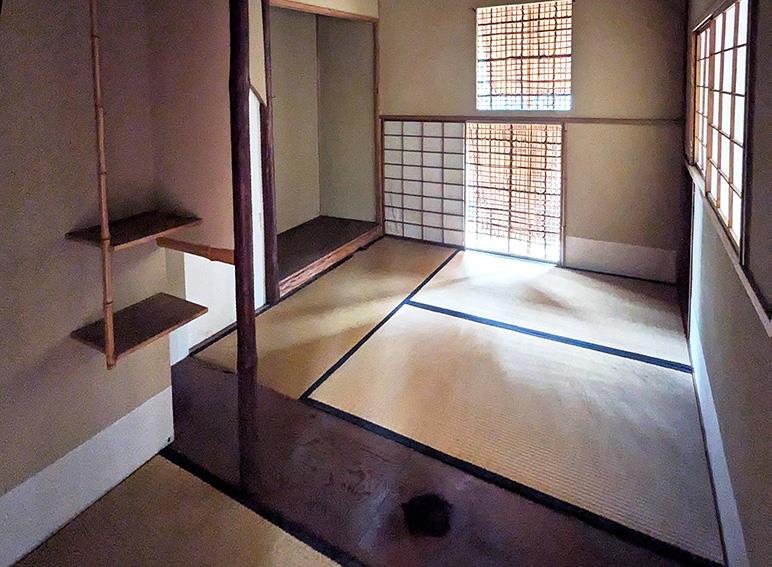
News & Press Releases
The Council for Cultural Affairs has submitted a recommendation to the Ministry of Education, Culture, Sports, Science and Technology to designate Otemae University teahouse "Chikuritsian" as a registered tangible cultural property (building).
2025.04.07
- notice
On Friday, March 21, the Council for Cultural Affairs submitted a report to the Ministry of Education, Culture, Sports, Science and Technology recommending that Otemae University Tea House "Takeritian (former Iwamoto family tea house)" be designated as a registered tangible cultural property (building). Registration is expected to take place after an official notice is issued.
"Chikuryuan" is thought to be part of the mansion that was built in Gomencho, Nishinomiya City (currently the site of Otemae University Sakura Shukugawa Campus Art Center) by Iwamoto Fusakichi and his son Shinichiro, who were active as stock market speculators in Kitahama, Osaka in the early Showa period, and is said to have a connection to Iwamoto Einosuke (Fusakichi's cousin), who was a stock market speculator who took the world by storm and donated the construction costs for Osaka Nakanoshima Public Hall. It is a valuable building in that it gives us an idea of the life of a financial leader who practiced the Hanshin modernist lifestyle.
The Iwamoto family mansion, including Chikuryuan, was used as an employee dormitory for companies such as Osaka Shosen Co., Ltd. throughout the prewar and postwar periods, and then became a student dormitory for Otemae Women's College, the predecessor of Otemae University. When the Otemae Art Center designed by Architecture Tadao Ando, was built in 1990, the existing wooden house was demolished and only Chikuryuan was moved there, as per the wishes of the then Chairperson of the Board Otemae Educational Corporation and Tadao Ando, where it remains to this day.
Chikutachian is said to be a copy of the teahouse "Hantoan" of Kyoto's third head of the Hisada family, Sozen (1647-1707), and it follows the basic layout and features of "Hantoan," such as "staggered skylights at the top and bottom" and "a single board in the middle" (see photo on the right).
Source: School Public Relations


